IPO TRACKER
A real-time look at every biotech IPO filed and the amount raised in all the world's indexes. Compiled by editor Max Gelman.
A real-time look at every biotech IPO filed and the amount raised in all the world's indexes. Compiled by editor Max Gelman.

What do you get when some of the most powerful CDMOs in the world join forces? The first SPAC dedicated to meeting the critical demand for biomanufacturing on the continent. eureKING is backed by eureKARE, the investment company focused on developing synthetic biology and microbiome innovation across Europe. The company has plans to raise 150 million euros, list on the Euronext Paris and has identified 40 manufacturing targets. The creation of the SPAC targets a booming, yet fragmented industry, eureKING says on its website. It will highlight three high-growth segments: biologics, cell and gene therapy and live biotherapeutics. It will seek to fill a gap left behind by small- to mid-sized biotechs that aren’t addressed by the largest CDMOs, and provide local facilities. eureKING dubs biomanufacturing the “next European Frontier” on its website.
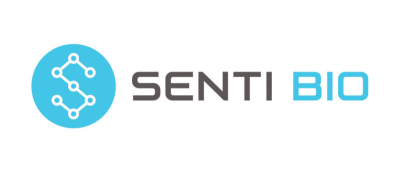
Senti Bio and its SPAC partner, Omid Farokhzad’s Dynamics Special Purpose Corp., completed their merger on June 9. Originally expected to deliver $296 million in gross proceeds, the final deal left Senti with $140.3 million. Those funds included $84.5 million of the expected $86 million from the SPAC trust, $50.6 million of the expected $66.8 million from the PIPE financing, and a recent $5.2 million investment by Leaps by Bayer. However, due to one investor, LifeForce Capital, failing to timely fund its $16.2 million commitment, Senti was forced to waive a $150 million cash closing condition related to the deal, in order to finish the merger by June 9. Senti Bio says it intends to enforce LifeForce’s legal obligations under its subscription agreement.

Eleusis had announced its planned SPAC merger on January 20, but said the deal had been terminated on June 9. The biotech has been focused on making psychedelics into medicines, and its lead candidate — a psilocybin infusion called ELE-Psilo — in development for depression. ELE-Psilo is expected to enter Phase I trials sometime this year. Psilocybin is a hallucinogen normally found in “magic mushrooms,” a type of naturally-grown mushroom that has been used for recreational and religious purposes. According to the biotech, an IV infusion of the hallucinogen would be more effective than oral ingestion because it would cut down on variability. Absorption and metabolism would vary significantly in different patients with the same dose of psilocybin when done orally, which would decrease when injected straight into the bloodstream, Eleusis said. Eleusis had expected to use the proceeds received from Silver Spike Acquisition Corp. II to support continued clinical development of ELE-Psilo, move early stage drug discovery and translational research forward and facilitate expansion of Eleusis’s subsidiary Andala, which manages psychiatric care clinics nationally.
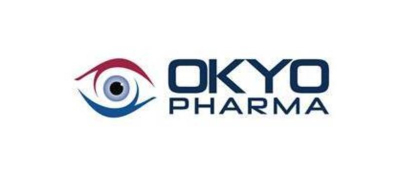
A preclinical player, the biotech is working on new treatments for inflammatory dry eye diseases and ocular pain. Its lead program, OK-101, is in the midst of the IND submission process. Okyo says a Phase I study will not be required, and a Phase II study is expected to begin in either the fourth quarter of 2022 or early 2023. Execs anticipate Phase II data to come in the second half of 2023.
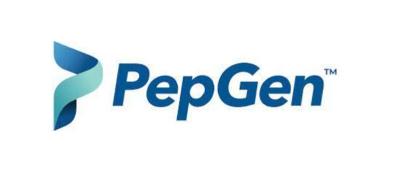
PepGen debuted on Wall Street about a month after transitioning to a clinical-stage company with its Duchenne muscular dystrophy trial in Canada. The biotech focuses on developing “cell-penetrating” peptides for severe neuromuscular diseases, such as DMD, with lead candidate PGN-EDO51 expected to read out topline data by the end of 2022. PepGen priced below its range, marking a rough publicly traded start for the RA-backed company’s efforts to improve upon Sarepta’s DMD drug Exondys 51. In the private markets, PepGen secured $113 million in crossover investor interest in the summer of 2021. PepGen wants to raise money for the lead DMD asset, an IND in the first half of 2023 for a myotonic dystrophy type 1 drug and three more DMD therapies (all targeting different exons) further down in the pipeline.
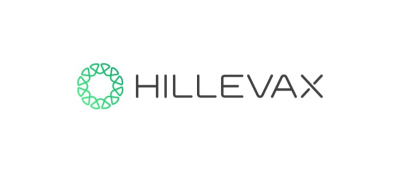
HilleVax is a norovirus vaccine developer spunout from Takeda by late biotech legend Tachi Yamada. The company made the public leap less than 10 months after being spun out from Takeda, with backing from Frazier Healthcare Partners. HilleVax launched with a Takeda norovirus vaccine candidate that had already completed several studies; HilleVax says it’s now been a part of nine Phase I and Phase II trials. The shot is being tested in a slate of Phase II studies aiming to evaluate its effectiveness in different age populations. HilleVax says in its S-1 it plans to launch a Phase IIb study in infants sometime in the second quarter, marking the first study it will conduct, rather than Takeda. The goal is to enroll about 200 infants. HilleVax aims to report interim immunogenicity data in the first half of 2023, followed by top-line data in the second half. Funds from the IPO are expected to be utilized for this study, as well as to prep for an eventual Phase III trial.
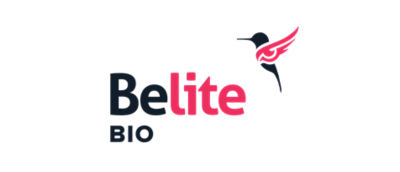
The company is developing an eye disease program, dubbed LBS-008, with a Phase III trial that launched in the first quarter. The company is testing it in both dry AMD and Stargardt disease, with the pivotal study examining adolescents who suffer from the latter condition. Its candidate is an oral once-a-day treatment designed to reduce and maintain the delivery of vitamin A to the eye. The program is eligible for a priority review voucher should it be approved, potentially another source of cash for Belite Bio. Most of the IPO funds are slated for further clinical development of LBS-008 in dry AMD, and Belite Bio hopes the offering will enable it to complete its ongoing Phase II and Phase III clinical trials in both dry AMD and Stargardt disease.
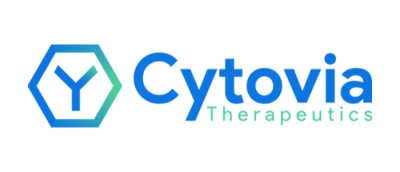
About 14 months after inking a natural killer cell deal with Cellectis, Cytovia agreed with the SPAC Isleworth Healthcare Acquisition to hit the Nasdaq in a blank check deal. It will bankroll INDs and the initiation of Phase I/II clinical trials for four assets: CYT-303, CYT-100, CYT-150 and CYT-503. After doling out $15 million upfront, with $760 million in milestones anticipated, to Cellectis in February 2021, the company went on to create a China joint venture. The biotech teamed up with China-based biotech investor TF Capital to form CytoLynx Therapeutics, with $45 million in funding, in September 2021. Aside from its partnership with Cellectis, Cytovia also has linked arms with CytoImmune Therapeutics, the Hebrew University of Jerusalem, INSERM, the New York Stem Cell Foundation, the National Cancer Institute, and the University of California, San Francisco.
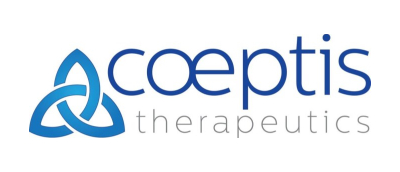
Coeptis’ merger agreement with Bull Horn Holdings Corp. came just six days after the biotech announced it planned to acquire Statera’s TLR5 agonist platform, including entolimod, for $6 million upfront and undisclosed biobucks to follow. In December 2021, the FDA lifted its clinical hold on entolimod for the treatment of acute radiation syndrome. The potential lethal radiation stockpile drug will likely enter a Phase II by the end of 2022, CEO Dave Mehalick told Endpoints. Coeptis is also working on developing a cell therapy targeting CD38-related cancers and a pre-clinical in vitro diagnostic for such cancers with partner VyGen-Bio. The therapeutic is intended to enable combo therapy with anti-CD38 monoclonal antibodies. The CEO founded Coeptis in 2017 with former employees from Three Rivers Pharmaceuticals, which was bought by Kadmon in 2010. Sanofi acquired Kadmon for about $1.9 billion last September.

Accelus and SPAC partner CHP Merger Corp. called off their business combination due to “market conditions.” The pair had announced in November 2021 that it would attempt to take Accelus, which focuses on making minimally invasive surgery (MIS) a standard of care in spine treatment, public through the $482 million blank check vehicle. When the merger was first announced, Accelus CEO and co-founder Chris Walsh was slated to helm the new company after more than two decades in the space. Outside of Accelus, Walsh spent more than a decade at San Diego device maker NuVasive and about seven years in the spine team at Stryker, a Michigan medical technology company.

Jim Tananbaum’s Foresite Capital withdrew its third SPAC pitch in April, having aimed to raise $250 million. Foresite did not give a reason in its withdrawal request. Tananbaum’s firm initially filed the S-1 in late February 2021, around the time when IPO and SPAC activity were at their highest. The filing came a couple weeks before the SEC asked that the institutions advising SPACs, such as big banks, voluntarily provide regulators with their internal policing strategies. It also wasn’t Tananbaum’s first foray into the blank check market either, as Foresite had previously taken two companies public through reverse mergers. Gemini Therapeutics went public with a $216 million SPAC in October 2020, while Pardes Biosciences leapt to Nasdaq with $199 million in tow after announcing in June 2021.
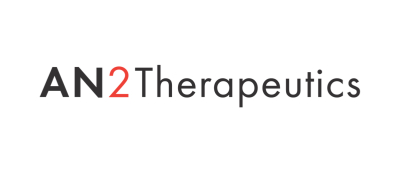
AN2 falls under RA Capital Management’s portfolio of newly public companies. The biotech received big backing from the Peter Kolchinsky/Raj Shah-run VC firm in an $80 million Series A in January. They followed it up with the IPO in March. The new money, according to AN2, will go to fund further clinical development of lead — and so far, sole — candidate epetraborole in an ongoing Phase I trial, a planned Phase II/III pivotal trial, manufacturing and expanding into other indications within lung disease and infections. AN2’s public turn comes after a largely quiet period since its launch in 2019, when it offered only two press releases in three years — its Series A and Series B announcements.
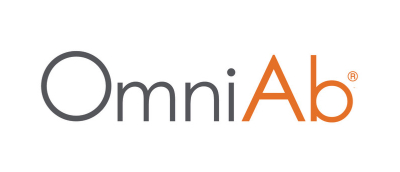
Parent company Ligand Pharmaceuticals had announced it would spin out its antibody discovery unit in November 2021, but didn’t decide until March 2022 to take the SPAC route. OmniAb is partnering with Avista Public Acquisition Corp. II in a deal expected to deliver at least $130 million and at most $266 million in cash, depending on whether APAC shareholders decide to cash out. Avista has also promised to invest an additional $115 million ($15 million as a PIPE, and the rest to backstop potential redemptions), while Ligand will contribute $15 million. Antibodies generated from the OmniAb platform — which spans a number of transgenic animals from rat to chicken to mouse — could rack up 10 approvals by 2028, per Ligand projections. The first ones came in 2021, when GloriaBio’s zimberelimab and EQRx/CStone’s sugemalimab were approved in China for different types of cancer. Both anti-PD-1 antibodies originated on the transgenic rat platform, OmniRat.

Sorrento first bought a majority stake in Scilex and its patch delivery tech for non-opioid therapies back in 2016, and has decided to spin it out in a SPAC deal with Vickers Vantage Corp I. The company’s lead product, a topical formulation of lidocaine called ZTlido, is approved to treat post-herpetic neuralgia, a form of post-shingles nerve pain. The deal will help fund a second product, SP-102, which Scilex aims to commercialize for lumbar radicular pain or sciatica in 2023, plus a couple of other programs. Scilex also has revealed Phase III data it touted as positive for SP-102, evaluating it in patients with lower back pain. The program met its primary endpoint, reducing the average daily pain in the affected leg over 4 weeks following the initial injection at a statistically significant rate.
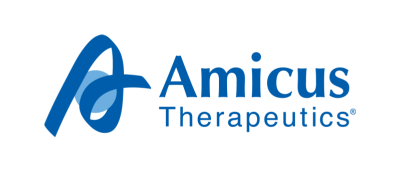
Roughly a month after Amicus Therapeutics reported an unexpected setback in a gene therapy planned to be spun out in a SPAC deal, the biotech and its blank check partner called off the merger in February. Amicus will not spin out its gene therapy unit with Arya Sciences Acquisition IV, the fourth SPAC belonging to Joseph Edelman’s Perceptive, after all. The two say they mutually agreed to end merger discussions, leaving Edelman with about another year to find a partner to take public. Amicus CEO John Crowley said the decision resulted from “current unfavorable market conditions” related to biotech IPOs, SPACs and follow-on financings. He also described an “increasingly challenging” environment for standalone gene therapy companies — both on Nasdaq and at the FDA. The proposed spin-out last September had aimed to bring Amicus’ Batten disease programs to market in its own public company. Planned to be called Caritas Therapeutics, the company was supposed to start with two clinical candidates in the disease, both of which Amicus said had attained proof-of-concept.
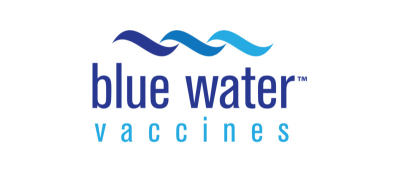
Blue Water does not have any programs in the clinic just yet. It’s developing several different vaccine candidates ranging from a universal flu shot to a standalone, long-lasting H1 flu shot. The company is also researching a norovirus/rotavirus vaccine, a norovirus/malaria vaccine and a Streptococcus pneumoniae vaccine. The biotech is using the money primarily to advance a slate of preclinical programs toward IND studies and boost manufacturing capabilities. In addition, some of the cash will also be used to fund Phase I studies for the flu shots and the Streptococcus pneumoniae vaccine.
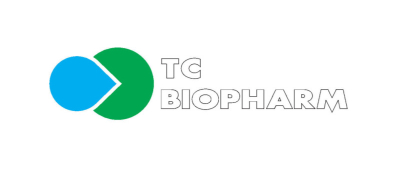
Way back in 2017, TC Biopharm teamed up with bluebird bio on an experimental program involving CAR-engineered gamma delta T cells, and that’s where they’ve focused the majority of their efforts. The company is planning on using the IPO funding on a Phase II/III trial for the treatment of acute myeloid leukemia, as well as a Phase I trial for viral infections such as Covid-19 and severe flu.
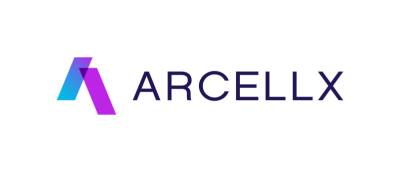
Though Arcellx priced its IPO at the low end of its range, it had something many other recently public biotechs don’t: data on how its therapies perform in humans. In 2020, the company showed its lead BCMA-targeting CAR-T for multiple myeloma shrunk tumors in six out of six patients, with four of them experiencing what’s known as stringent complete response. And at #ASCO22, expanded results showed that of 16 patients with 12-month data, 13 achieved a complete response to Arcellx’s therapy — a CR rate of 81%. While Arcellx’s BCMA-targeted CAR-T therapy would be coming behind already approved ones from Janssen and Bristol Myers Squibb, Arcellx CMO Chris Heery is not too concerned about the competition. He added that Arcellx will begin dosing patients in its Phase II trial for its BCMA-targeted CAR-T therapy later this year.
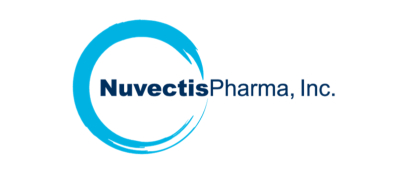
Founded in 2020, Nuvectis Pharma is working on pushing two in-licensed cancer programs into the clinic, with a lead program that’s ready for Phase I. That candidate, brought in from London’s Institute for Cancer Research, is an inhibitor of the heat shock factor 1 pathway. The biotech’s second program comes from the University of Edinburgh in Scotland, with a deal signed in August 2021. It’s a candidate trying to inhibit the SRC and YES 1 kinases. Nuvectis was founded by a pair of executives from Stemline Therapeutics and a third biotech veteran, Ron Bentsur, who used to be the CEO of UroGen. Bentsur owns the biggest stake in the company at about 26%.

Akili Interactive, makers of the first FDA-approved video game, rode its successes to a SPAC deal in January 2022 valuing the company at more than $1 billion. But in filing some of its first financial disclosures, Akili revealed it has a tough road ahead to commercial profits. In an S-4 filed with the SEC, the company said it made only about $377,000 in the first nine months of 2021 and incurred more than $41.6 million in expenses over the same time period. The steep operating losses came after Akili was more than $25 million in the red for all of 2020 and lost $21.5 million in 2019. Those losses have raised “substantial doubt about the Company’s ability to continue as a going concern,” Akili wrote: It does not have enough cash on hand to continue operating for the next year. The deal is expected to finalize in mid-2022, with SPAC king and tech billionaire Chamath Palihapitiya set to become chairman of the board.
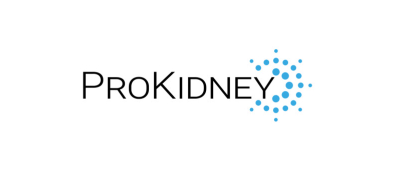
The outspoken “Piped Piper of SPACs,” Chamath Palihapitiya, announced he’d be taking ProKidney public in January 2022. A former Facebook executive and co-owner of the NBA’s Golden State Warriors, Palihapitiya launched four SPACs all targeting different sectors of biotech in the early summer of 2021. Palihapitiya has been a prominent and influential figure in this realm, having previously launched a slate of six SPACs spanning multiple industries. ProKidney was founded in 2016 but really got going at the beginning of 2019 with the $62 million acquisition of inRegen, which was working on an autologous — from the patient — cell therapy for kidney disease. After extracting kidney cells from patients, researchers expand the cells in the lab and then inject them back into patients, aiming to restore the kidneys of patients suffering from CKD. Four of Palihapitiya’s firms have found partners thus far, including one that took fellow billionaire Richard Branson’s space tourism company Virgin Galactic public. He’s only grown his influence since the start of the Covid-19 pandemic, cultivating a large audience of stuck-at-home millennial and Gen Z retail investors through his Twitter account and a popular weekly podcast.
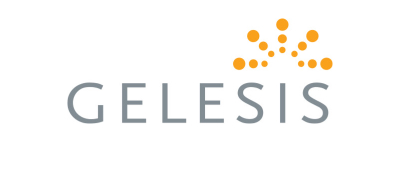
Developing weight-management pills that are on the cusp of a national rollout, PureTech-founded Gelesis announced it would reverse-merge with Capstar Special Purpose Acquisition Corp. in July 2021. The deal was projected to give Gelesis access to the $376 million raised from the SPAC, as well as another $100 million in PIPE funding, but after 98% of SPAC investors pulled out, the company ended up with only $105 million in gross proceeds. With the substantial decrease in funds, Gelesis was forced to lay off 140 contractors in February that had been hired to promote its weight-loss pill Plenity. Taken twice a day before lunch and dinner, the $98-per-month treatment is designed to expand in the stomach, making adults feel fuller with smaller portions of food. It was approved in 2019. Gelesis is the third PureTech entity to go public after Karuna Therapeutics hit Nasdaq with a traditional IPO in 2019 and Vor Biopharma followed suit in early 2021.
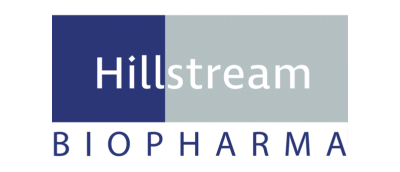
Hillstream has been focused on ferroptosis, a type of programmed cell death being studied for treatment resistant cancers. The company’s most advanced candidate is HSB-1216, an iron mediated cell death (IMCD) inducer for solid tumors. Hillstream aims to submit an IND and start a clinical study with the drug next year.
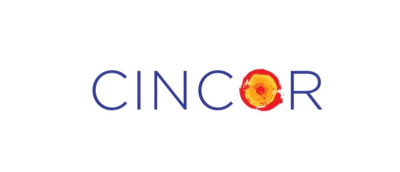
CinCor Pharma made some noise after raising $143 million in a Series B in October 2021, and a few weeks later planned a jump to Nasdaq. Former Ipsen chairman and CEO Marc de Garidel had big plans with the debut, spinning out from parent company CinRx Pharma. The company is going all in on CinCor’s only drug candidate: baxdrostat, or CIN-107, an oral aldosterone synthase inhibitor that co-founders Jon Isaacsohn and Catherine Pearce licensed from Roche for $3 million back in 2019. Aldosterone is a hormone linked to increased blood pressure, and has been a target of interest to treat hypertension. Once baxdrostat reaches certain milestones, CinCor will pay Roche another $40 million, along with an additional $175 million in sales milestones, plus royalties. Phase II data are expected in the lead indication of treatment-resistant hypertension in the second half of 2022. It’s also being studied in uncontrolled hypertension (Phase II topline expected 2H 2023), primary aldosteronism (Phase II topline expected 2H 2023) and patients with both uncontrolled hypertension and chronic kidney disease (Phase II topline expected 2H 2023).
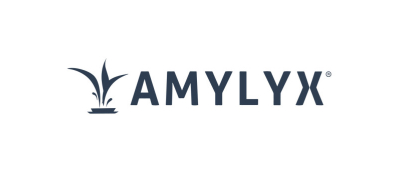
Amylyx has the entire ALS patient community behind its back, as its lead program is currently sitting before the FDA to potentially become just the third-ever approved treatment for the universally fatal disease. The biotech went public back in January before getting a date with the FDA advisory committee in late March. Agency panelists recommended against recommending approval in a slim 6-4 vote that featured a nearly two-hour long public comment period. Observers are closely watching the Amylyx ALS drug, dubbed AMX0035, in the wake of the Biogen Aduhelm fiasco, keying in on the pressure regulators are facing to approve the compound. The central issue of the adcomm had to do with whether the Amylyx drug should be approved on the basis of a single randomized trial, or if it should wait for Phase III data to read out, likely in 2024. Amylyx received a PDUFA delay on its application, pushing the decision back to September 29.
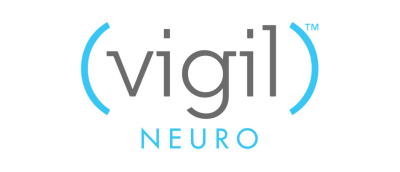
Vigil launched back in December 2020 with $50 million in Series A cash and a couple of TREM2 agonists picked up from Amgen after it joined Big Pharma’s mass exodus from neuroscience. Then in August 2021, the biotech reeled in another $90 million from VC investors. Now the lead candidate, VGL101, is in a Phase I study for an inherited condition called adult-onset leukoencephalopathy with axonal spheroids and pigmented glia (ALSP), which is characterized by changes to certain areas of the brain. Patients with ALSP often experience early symptoms like personality changes or depression, and go on to develop dementia, difficulty walking and tremor, among other symptoms. Phase I data are expected in the second half of 2022, and Vigil anticipates launching a Phase II trial in this timeframe as well. Another TREM2 candidate is expected to reach the IND filing stage for genetically defined Alzheimer’s subpopulations.